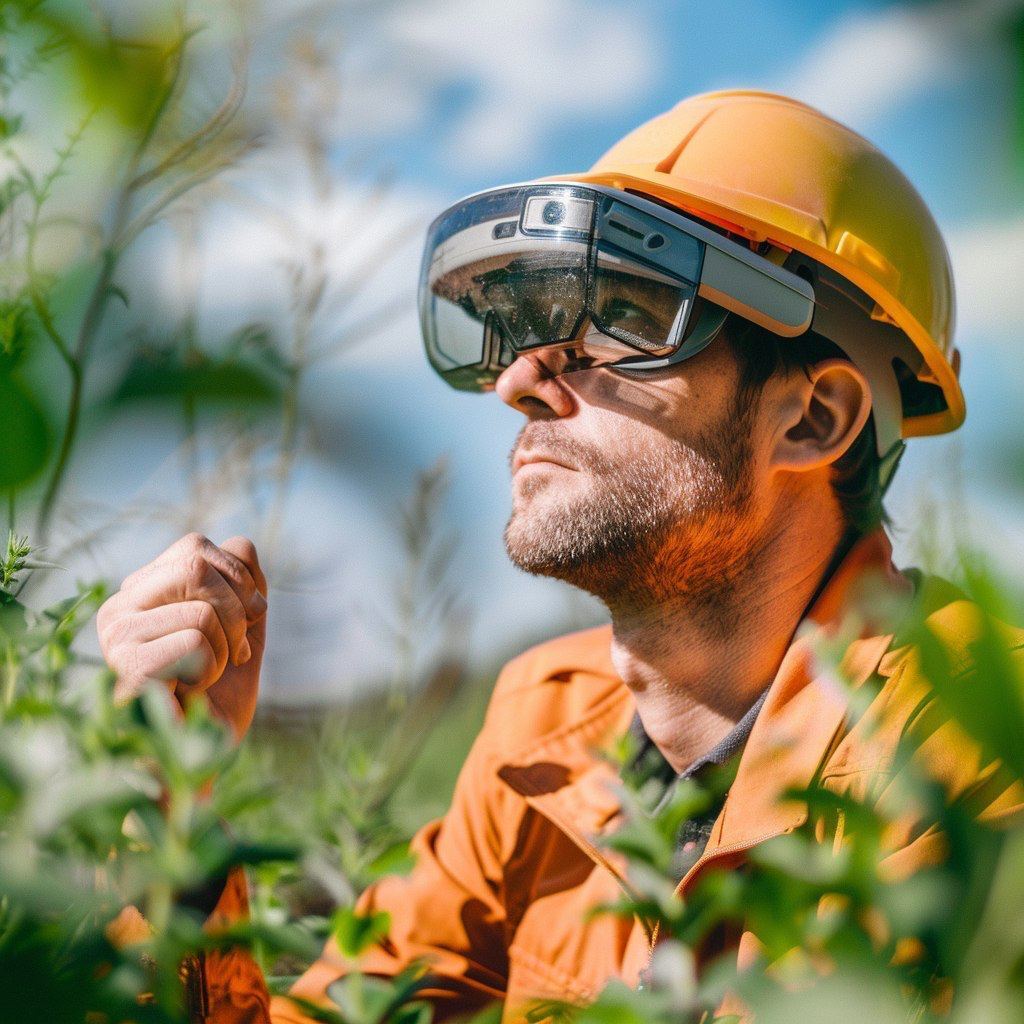Technologies of Augmented Reality (AR) will actively penetrate fields and farms in the coming decades, changing the approach to farming and bridging the gap between physical and digital objects.
According to the latest report "Augmented Reality (AR) in Agriculture — Thematic Intelligence," released by Global Data in March 2024, augmented reality (AR) enhances productivity and efficiency across the entire agribusiness value chain. AR improves the effectiveness and efficiency of agricultural training through simulation or real-time management. AR also reduces downtime of agricultural machinery by assisting technicians in maintenance. Caterpillar, John Deere, and Claas are actively investing in building an AR-based service ecosystem. Combined with other emerging technologies such as artificial intelligence (AI) and the Internet of Things (IoT), AR data visualisation will contribute to precision farming. Such intelligent and efficient use of agricultural resources will be crucial to meeting the growing demand for food while minimising environmental pollution.
In its early 2024 review of AR applications in agriculture, Inkwood Research notes the growing demand for spatial computing applications:
• Agriculture is a complex industry as it involves the use of sophisticated machinery and technology. Therefore, farmers need to stay updated on these technical developments to maximise yield and profitability.
• Through an immersive e-learning environment, AR technology helps novice farmers familiarise themselves with agricultural machinery. It accelerates remote collaboration for training farmers experienced in modern agricultural methods and procedures, and helps new farmers learn to use advanced farming techniques through visual aids.
• By using spatial computing, farmers can operate equipment as if it were part of the real world and in real-time.
According to the latest report "Augmented Reality (AR) in Agriculture — Thematic Intelligence," released by Global Data in March 2024, augmented reality (AR) enhances productivity and efficiency across the entire agribusiness value chain. AR improves the effectiveness and efficiency of agricultural training through simulation or real-time management. AR also reduces downtime of agricultural machinery by assisting technicians in maintenance. Caterpillar, John Deere, and Claas are actively investing in building an AR-based service ecosystem. Combined with other emerging technologies such as artificial intelligence (AI) and the Internet of Things (IoT), AR data visualisation will contribute to precision farming. Such intelligent and efficient use of agricultural resources will be crucial to meeting the growing demand for food while minimising environmental pollution.
In its early 2024 review of AR applications in agriculture, Inkwood Research notes the growing demand for spatial computing applications:
• Agriculture is a complex industry as it involves the use of sophisticated machinery and technology. Therefore, farmers need to stay updated on these technical developments to maximise yield and profitability.
• Through an immersive e-learning environment, AR technology helps novice farmers familiarise themselves with agricultural machinery. It accelerates remote collaboration for training farmers experienced in modern agricultural methods and procedures, and helps new farmers learn to use advanced farming techniques through visual aids.
• By using spatial computing, farmers can operate equipment as if it were part of the real world and in real-time.

Using AR glasses or mobile devices, farmers can access multi-layered data about crops in real-time while being directly in the field. Quick access to structured data allows for timely actions, potentially saving crops from diseases or optimising their growth conditions.
AR technologies enable more precise dosing and distribution of substances, automated accounting of necessary plant treatment resources, reducing manual tracking time and increasing work efficiency.
The future of AR in agriculture lies not only in autonomy but also in its seamless integration with other technologies. The synergy between AR, IoT, AI, and various types of autonomous drones will significantly impact agricultural productivity.
AR technologies enable more precise dosing and distribution of substances, automated accounting of necessary plant treatment resources, reducing manual tracking time and increasing work efficiency.
The future of AR in agriculture lies not only in autonomy but also in its seamless integration with other technologies. The synergy between AR, IoT, AI, and various types of autonomous drones will significantly impact agricultural productivity.

